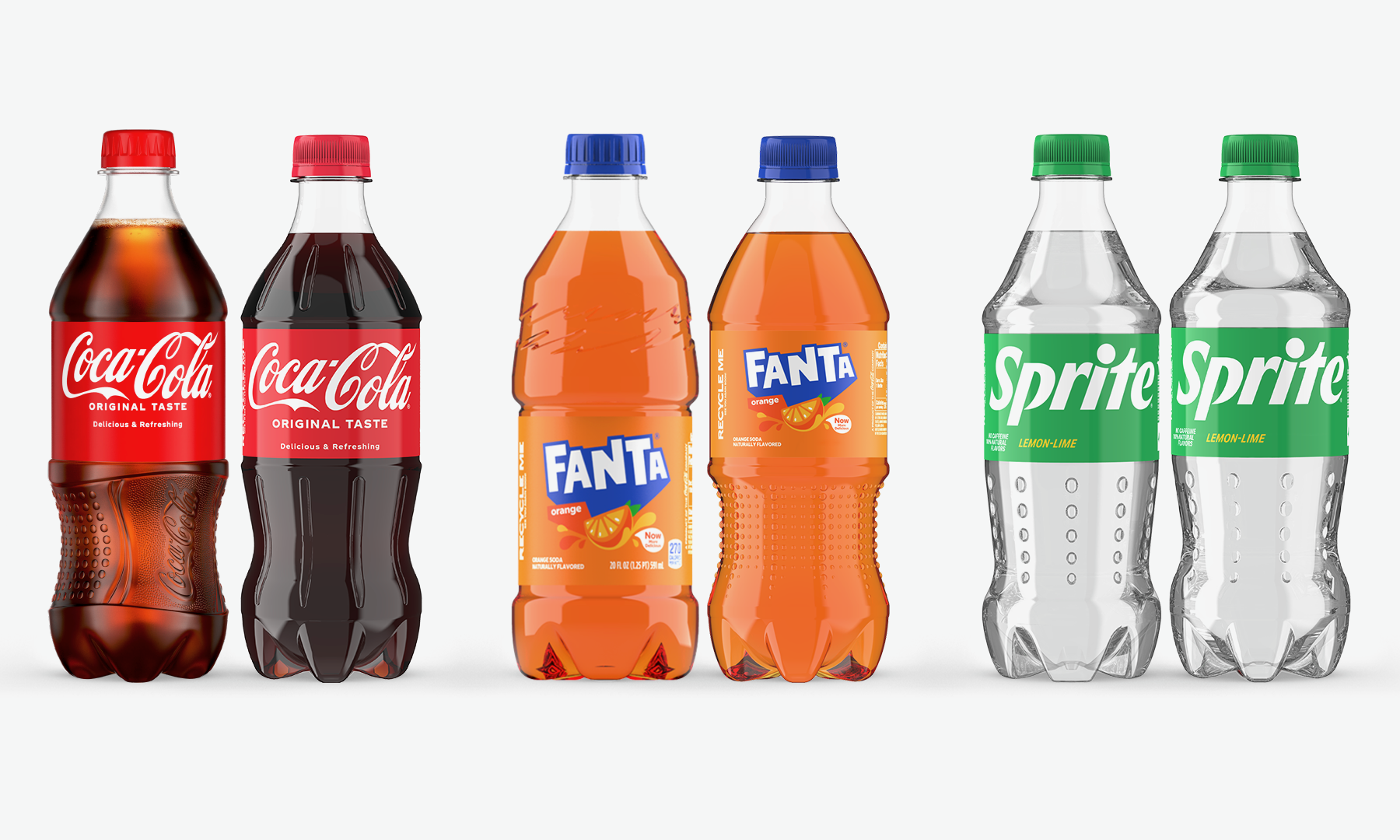
Coca‑Cola North America Debuts New Lightweight PET Bottle Designs
03-28-2024
The Coca‑Cola Company is rolling out redesigned, lighter-weight PET bottles across its sparkling beverage portfolio across the U.S. and Canada as part of a broader commitment to create a circular economy for its packaging.
For the first time in a decade, 12-, 16.9- and 20-oz. bottles of Trademark Coca‑Cola, Sprite and Fanta—as well as Minute Maid Refreshments and Minute Maid Aguas Frescas—are sporting new shapes that require less raw material to produce.
“We’ve been continuously working to ‘right-weight’ our bottles, incrementally going from 27 to 21 grams over the last 10 years,” said Alejandro Santamaria, Sr. Director for Global Packaging Development and Innovation. “But we’d reached the ‘floor’ with our previous designs. Our breakthrough innovations in modeling technology, which reduce the weight of our bottles to 18.5 grams, represent a major step in reducing the amount of materials used while preserving the durability and functionality of our packaging and, most importantly, the quality and taste standards of our beverages.”
PET bottles are made by injecting heated liquid resin into test tube-like “preforms,” which are then inflated into bottle molds with the final intended shape.
“The secret is finding the right preform design, combined with bottle shape features, that allow you to lightweight without compromising quality,” Santamaria explains, noting that the designs apply to both virgin and 100% recycled plastic bottles (excluding cap and label). “This is especially critical with sparkling beverages, which must maintain specific carbonation levels to preserve taste when opened.”
The new bottles, which will gradually roll out across the United States and Canada in 2024, will deliver significant sustainability benefits for The Coca‑Cola Company and its bottling partners. The transition is projected to reduce use of new plastic by the equivalent of approximately 800 million bottles in 2025 compared to 2024. Additionally, the packaging shift is estimated to reduce carbon emissions in 2025 compared to 2024 in an amount equivalent to taking more than 17,000 cars off the road for one year.
It supports the company’s World Without Waste goals of designing all packaging to be recyclable by 2025, using 50% recycled content by 2030, collecting a bottle or can for each one we produce by 2030 and reducing our use of virgin plastic derived from nonrenewable sources. All of these initiatives contribute to creating a circular economy for our packaging material, reducing waste and emissions.
Testing is underway to potentially apply the new lightweighted designs to multi-serve 2-liter and 24-oz. PET bottles. Additionally, a significant portion of the Coca‑Cola North America still beverages portfolio, including sports drinks, enhanced waters and teas will transition from hot fill to aseptic processing, which uses less plastic and energy by filling beverages into pre-sterilized containers.
“We intentionally started with our highest-selling SKUs,” Santamaria concluded. “And we are not leaving any rock unturned when it comes to reducing our per-package use of PET material.”